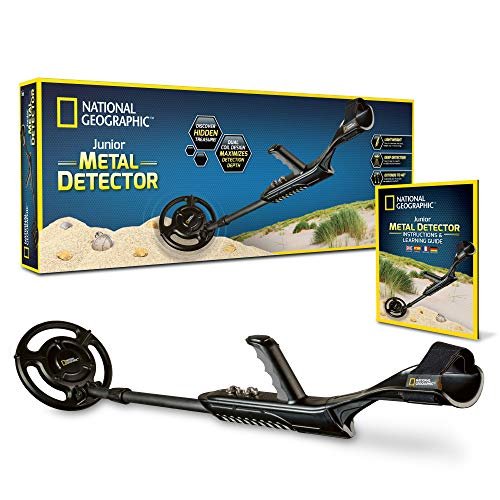National Geographic Junior Metal Detector
The National Geographic Junior Metal Detector is a metal detector specifically designed for young detectorists and beginners. Here's a review of the National Geographic Junior Metal Detector, highlighting its pros and cons, as well as some notable finds made by detectorists using this model:
Pros of the National Geographic Junior Metal Detector:
1. Beginner-Friendly: The National Geographic Junior Metal Detector is designed with young detectorists in mind. It is lightweight, easy to use, and has a simplified interface, making it accessible and enjoyable for children.
2. Adjustable Length: The detector's shaft length can be adjusted to accommodate the height and comfort of young users. This feature ensures a proper fit and enhances the overall detecting experience.
3. Audio Feedback: The National Geographic Junior Metal Detector provides audio feedback, emitting a beeping sound when a target is detected. This audio cue helps young users locate buried objects effectively.
4. LED Light Indicator: The detector is equipped with an LED light that illuminates when a target is detected. This visual feedback enhances the detection process, especially in low-light conditions or when detecting in the dark.
5. Educational Materials: The National Geographic Junior Metal Detector comes with an informative booklet and a collection of educational resources. These materials introduce children to the world of metal detecting, helping them learn about different types of metals and how detectors work.
Cons of the National Geographic Junior Metal Detector:
1. Limited Detection Depth: Due to its simplified design and lower price range, the National Geographic Junior Metal Detector may have limited depth penetration compared to more advanced and higher-priced models. It may struggle to detect objects buried deeper in the ground.
2. Limited Features: The detector lacks advanced features found in more professional-grade detectors. It does not offer discrimination capabilities or target ID features, limiting the user's ability to distinguish between different types of targets.
Finds with the National Geographic Junior Metal Detector:
1. Coins: The National Geographic Junior Metal Detector has helped young detectorists find various coins, including pennies, dimes, and even occasional silver coins. Discovering coins can be an exciting and rewarding experience for beginners.
2. Jewelry: While the detection capabilities of the Junior Metal Detector may not be as advanced as high-end models, young users have still been able to locate small jewelry items like earrings, necklaces, and bracelets.
3. Small Relics: The detector has led to the discovery of small relics and artifacts, such as buttons, buckles, and toy soldiers. These finds provide a glimpse into history and can spark interest in archaeology and historical preservation.
4. Lost Items: The National Geographic Junior Metal Detector has helped young detectorists find lost items, such as keys, coins, and small toys, in outdoor spaces like parks and beaches.
Overall, the National Geographic Junior Metal Detector offers a fun and accessible introduction to metal detecting for young enthusiasts. It provides a lightweight and easy-to-use option with audio and visual feedback. While it may have limited detection depth and lacks advanced features, the detector has still enabled young users to discover coins, jewelry, small relics, and lost items, fostering a sense of excitement and curiosity about the world of metal detecting.
